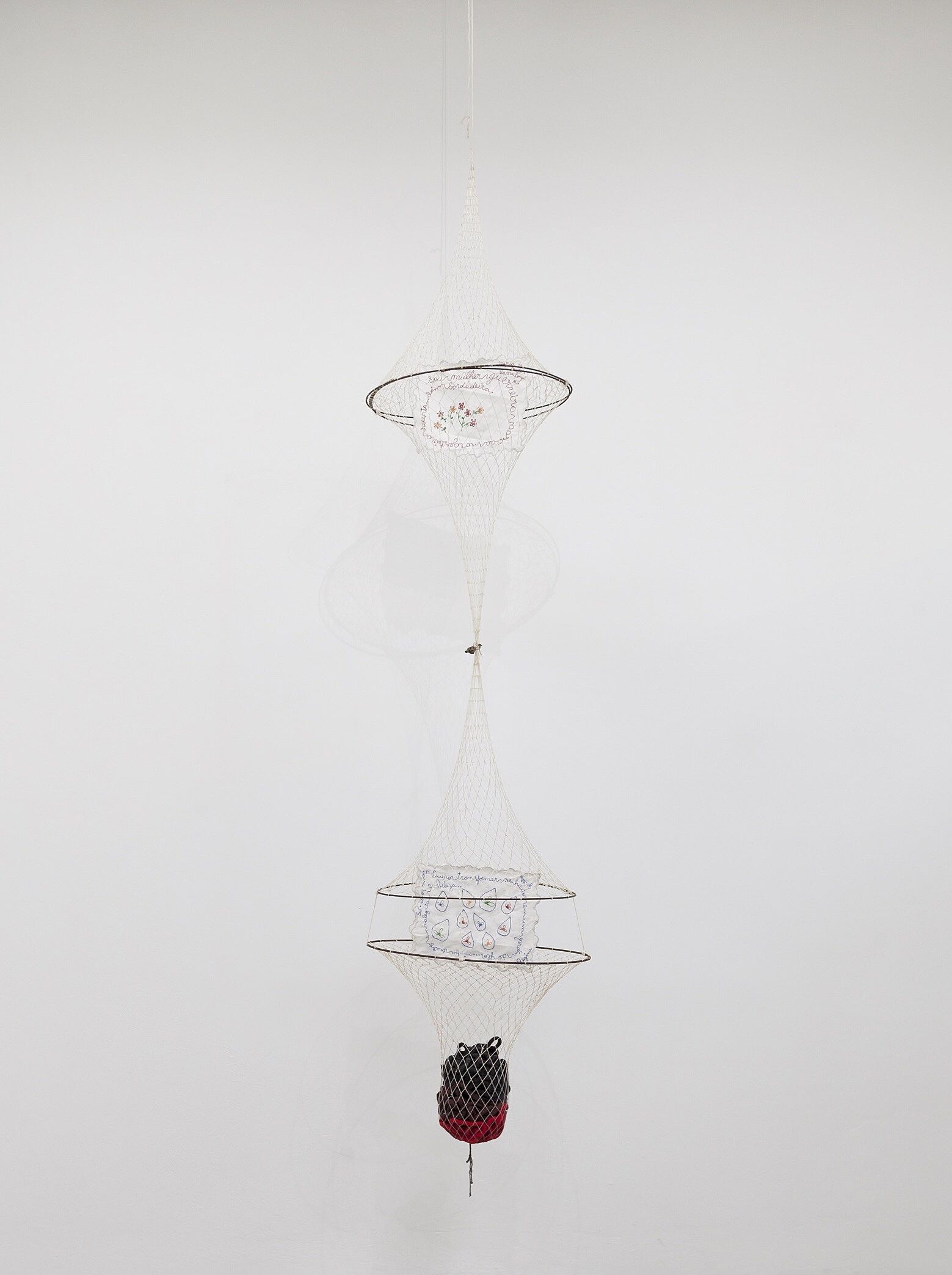Between the Waters | Art & Artists
Mar 9–July 22, 2018
Between the Waters | Art & Artists
Carolina Caycedo
1
Carolina Caycedo’s Cosmotarrayas combine handmade fishing nets and collected objects, many from Mexico, Colombia, and Brazil. Fishing towns such as La Jagua, on Colombia’s Magdalena (Yuma) River, are facing environmental and economic damage from the construction of hydroelectric dams, which dramatically alter the landscape and water. Responding intuitively to these conditions, Caycedo creates talismanic assemblages in tribute to activists fighting the dams and to those resisting displacement simply by persisting in their daily labors.
For Los Angeles–based Caycedo, whose parents are Colombian, the fishing net (or atarraya) represents the unique connection between fishing communities and the river, embodying knowledge, food sovereignty, and economic autonomy. No longer usable because of water contamination, the nets become symbols in her sculptures, affirming a belief in the river as a communal, living force.



